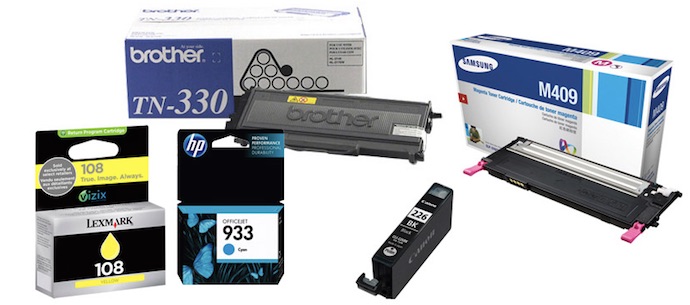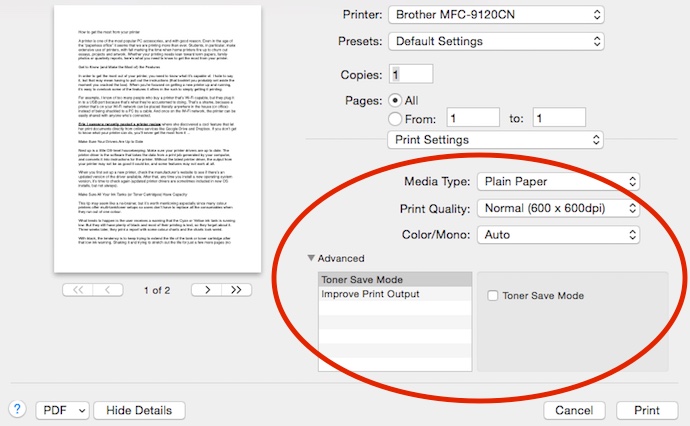
A printer is one of the most popular PC accessories, and with good reason. Even in the age of the “paperless office” it seems that we are printing more than ever. Students, in particular, make extensive use of printers, with fall marking the time when home printers fire up to churn out essays, projects and artwork. Whether your printing needs lean toward term papers, family photos or quarterly reports, here’s what you need to know to get the most from your printer.
Get to Know (and Make the Most of) the Features
In order to get the most out of your printer, you need to know what it’s capable of. I hate to say it, but that may mean having to pull out the instructions (that booklet you probably set aside the moment you cracked the box). When you’re focused on getting a new printer up and running, it’s easy to overlook some of the features it offers in the rush to simply getting it printing.
For example, I know of too many people who buy a printer that’s Wi-Fi capable, but they plug it in to a USB port because that’s what they’re accustomed to doing. That’s a shame, because a printer that’s on your Wi-Fi network can be placed literally anywhere in the house (or office) instead of being shackled to a PC by a cable. And once on the Wi-Fi network, the printer can be easily shared with anyone who’s connected.
Erin Lawrence recently posted a printer review where she discovered a cool feature that let her print documents directly from online services like Google Drive and Dropbox. If you don’t get to know what your printer can do, you’ll never get the most from it …
Make Sure Your Drivers Are Up to Date
Next up is a little OS-level housekeeping. Make sure your printer drivers are up to date. The printer driver is the software that takes the data from a print job generated by your computer, and converts it into instructions for the printer. Without the latest printer driver, the output from your printer may not be as good it could be, and some features may not work at all.
When you first set up a new printer, check the manufacturer’s website to see if there’s an updated version of the driver available. After that, any time you install a new operating system version, it’s time to check again (updated printer drivers are sometimes included in new OS installs, but not always).
Make Sure All Your Ink Tanks (or Toner Cartridges) Have Supplies
This tip may seem like a no-brainer, but it’s worth mentioning especially since many colour printers offer multi-tank/toner setups so users don’t have to replace all the consumables when they run out of one colour.

What tends to happen is the user receives a warning that the Cyan or Yellow ink tank is running low. But they still have plenty of black and most of their printing is text, so they forget about it. Three weeks later, they print a report with some colour charts and the charts look weird.
With black, the tendency is to keep trying to extend the life of the tank or toner cartridge after that low ink warning. Shaking it and trying to stretch out the life for just a few more pages (no judgement—I do that too) often results in grey, streaky text instead of the crisp black your printer is capable of producing.
So make sure your ink tanks or toner cartridges all have some capacity remaining, or your printing output is going to be disappointing, if not now then soon (and probably at an inconvenient time).
Use the Print Settings
Your printer will have Print Settings (usually accessed through a dialog box on your PC when you setup a print job, but sometimes on a control panel on the printer itself).

These settings are key to getting the most out of your printer when it comes to things like print quality, colour accuracy and ink/toner conservation. A printer that’s been set to conserve ink will be able to print more pages between refills, but printing a colour photo will produce output that’s faded looking. Know your printer’s Print Settings and know how (and when) to adjust them to get the consumable efficiency you want and maximum quality print output when you need it.
Use the Right Paper
Have you ever wondered why your printer has never produced output that looked as good as with the sample paper package the manufacturer included in the box?
If so, you’re probably using the wrong paper …
Believe it or not there is a difference between paper that’s optimized for a laser printer and that intended for an inkjet printer. And if you want to print a photo that looks as good as the prints you get from photo labs, that’s a speciality photo paper that makes colours pop while offering that gloss we expect from prints.
Make sure you’re using the right paper for the job and you’ll be amazed at how good your printer’s output can look.
Keep it Clean
Printers are extremely high precision machines with many moving parts. An inkjet printer might be laying down thousands of drops of ink within in a square inch, using multiple colours. At the same time, paper (with all the dust it can generate) is being rapidly fed through the print mechanism. And then there’s environmental dust that settles on horizontal surfaces and into cracks.
Rollers get dusty, print heads get dirty and print nozzles get clogged.
Keep your printer clean and it will produce better results—and probably last longer, too. Besides dusting it off on occasion, clean the printer components according to manufacturer instructions (yup, you’re going to have to read that user manual again).
Print a Test Page
As part of your cleaning routine or for generally making sure your printer is at its best, print off a test page. This will quickly show if there are any issues like low ink or a clogged print nozzle and as part of that Printer Utility, you’ll be able to instruct the printer to run key cleaning/maintenance routines like cleaning its print head.
Follow these tips and you’ll not only make the most of your printer and its special features, but you’ll be able to count on printed output that lives up to all your expectations.



